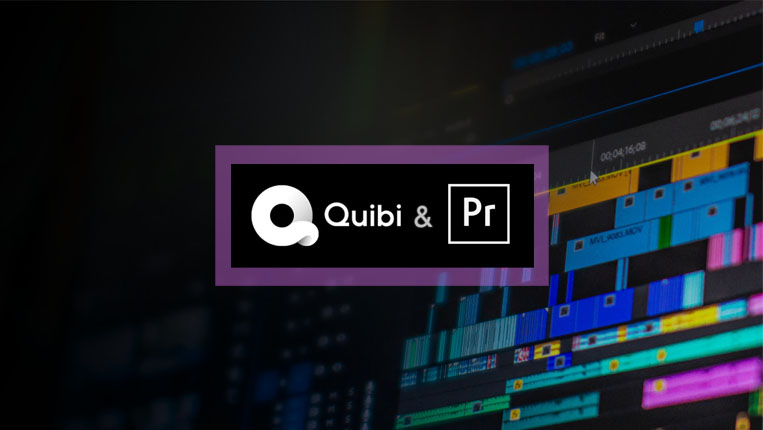A LOOK AT THE ADOBE PREMIERE PRO WORKFLOW FOR QUIBI

Quibi came along at just the right time. Never mind that it was founded by media mogul Jeffrey Katzenberg and boasts eBay and HP’s Meg Whitman as CEO. Perhaps in some other world it might have been just another mobile device content provider. But in a time of lockdown with greater need for diverting entertainment, Quibi hits all the markers.
It runs on what for me at least is my transplanted appendage, my mobile phone. It has a variety of content from drama to music to horror, travel, comedy, news and opinion. And that content is in nice, short digestible chunks suitable not just to the medium of the mobile device but also to a time when we need a break from working at home, educating the kids, and let’s face it. Time away from worry.
Subscription Model
The subscription model of plans that start at $5 per month is proving effective in attracting subscribers and the content promises to retain those subscribers.
Quibi not only provides opportunity for both the star talent recruited but also for a wider range of celebrities in the making and even with the Barkitecture show, yes canine celebrities in the making.
But to our own craft, Quibi requires content creators to deliver assets that can switch from a traditional 16:9 stream to vertical video, a position where a significant number of users choose to hold their phones.
Adobe has sought to help creators produce deliverables through Premiere Pro with a free workflow guide for Premiere Pro.
Adobe Premiere Pro
The most recent release of Premiere Pro relies heavily on Adobe Sensei technology (translation – AI) for certain key features needed in this dual-asset format. These include Auto Reframe, position-aware motion graphics, side by side timeline comparisons and most importantly export presets.
All of these tasks could always have been accomplished in Premiere Pro or in any NLE for that matter. But the uniqueness that the Adobe workflow brings to the table is the automatic nature of these features. It saves time, simply put.
From experience I can say that features such as auto-reframe perform with a high degree of accuracy. But the final effect and positioning can be adjusted manually. A manual adjustment is still faster than creation of the effect from scratch with the application’s toolset.
By Ned Soltz

熱門頭條新聞
- Pokémon TCG Collects Some New Tricks
- 48 hours: 10. Global Game Jam @ InnoGames
- Puella Magi Madoka Magica Magia Exedra
- SelectaPlay and Newcore Game Reveal The Devil Within: Satgat Collector’s Edition for PlayStation 5
- 10 Reasons Filmmakers Can Thrive in 2025
- The CNC at the 75th edition of the Berlinale and the European Film Market
- The 2025 Kidscreen Award winners
- Vibrant Action Roguelite Yasha: Legends of the Demon Blade Releases April 24,2025
